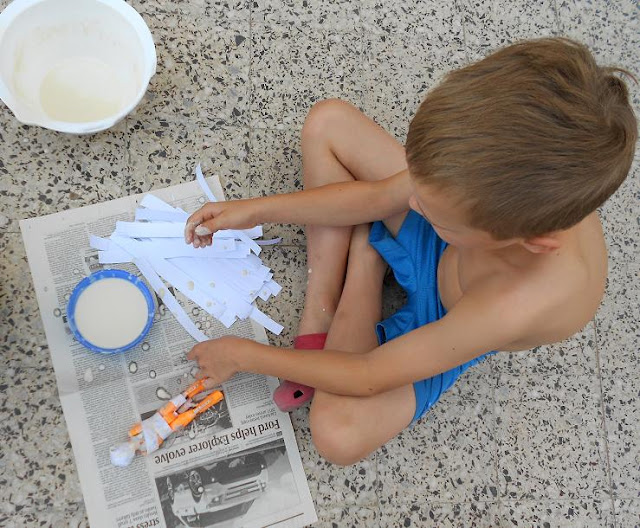A while back my dh was out with two of our boys in town. A young man who was also a young father observed them as they shopped. Intrigued by the relationship and the obedience he saw, he approached my dh and asked, “Excuse me, but I am impressed by your children. How do you get them to do what you ask like that?” My dh was ready with a reply, “It is simple, rules and relationship. They are like two arms holding up my child. Without one or the other the child will fall.”
In our home we have what some may consider narrow limits on what we would consider acceptable behavior, but we expect a lot because on the flip side of our high expectations we are pouring in huge amounts of intentional tying of strings towards a solid relationship. With the two things in place it works like a charm towards developing discipline and godly behavior. Let me give you an example from our everyday life to illustrate this:
Every morning the boys have a list of chores they MUST complete before breakfast. It is written on a chart and posted at their eye level just outside the kitchen.
With the chores we are aiming at developing a good work habit. The habit is this:
• Do your work before you sit down to play or enjoy yourself.
• Do your work first thing in the day.
• Do your work without being asked or nagged.
• Do your work cheerfully.
• Do your work thoroughly and the how you were asked to do it.
• Do a little more than what was asked. (look for ways to bless others in your work)
"There are few parents who would not labour diligently if for every month's labour they were able to endow one of their children with a large sum of money. But, in a month, a parent may begin to form a habit in his child of such value that money is a bagatelle by comparison." Charlotte Mason Vol. 2 Pg 73
So, breakfast is set to be served at 8:00 o’clock. They are well aware of this. I wake them up with music at 7:00 o’clock if they are not already up. That allows them plenty of time to get their work done with play time if they finish early. (The natural reward of work well done is free time.) My job is not to remind them of the chore chart, not to be glaring at them during that hour but to be cheerful, greeting them with hugs and appreciation at having them in my day. In this I am welcoming them into a relationship of joy and a positive atmosphere however they may have woken up, it sets the tone and draws them into it. I also look for ways to help in their work not by doing it for them but by showing appreciation for their efforts. I am also working along side them getting breakfast cooked and ready. We are than all practicing a good work habit. We all are under the same rules, and as I am doing this, I am tying strings towards a relationship.
Once they have completed the chore they ask to be inspected. We spent a good month or so when we began this chore chart to explain each chore, walk through it with them and show them what is expected. We did this until we were sure they understood. Then when they ask to be inspected we can really inspect, and they have been learning to check themselves because if it is not in order then… the consequence.
If they did not do the chore (usually because they got to playing before it was done), or did not do it thoroughly, or it was done with a whine or worse and rebellious tone in their attitude then they are given only a healthy piece of bread for breakfast and a glass of water. This will remind them that their work was not done up to standard, and it will give them enough sustenance that they can get through school without being under nourished. We give them the consequence without pitiful looks or any commentary on their response. It is a dry, judicial moment when we keep our smiles and encourage then back into the regular banter around the table.
It takes a few mishaps and a few cries before they really get it if I am consistent, but soon their tears dry up and they are more motivated the next day to place upon themselves the responsibility to get the work done. It goes up and down because habits are sometimes long in coming. We aim for 100% knowing Christ in us gives us the way to get there and expect Him to come through on our down days.
At this point in the discipline process it is important to remain steady and cheerful expecting the best. Giving in to the tears and whines only prolongs the habit building and the habit you were aiming at takes longer to develop. The tender hearted or inconsistent parent causes more pain in the long run if she does not stick to the plan and allow the child to learn the habit. I am by nature tender hearted and inconsistent so I am fully aware of need to call on Jesus for help, so I am learning along with them a different discipline. My consequence would be that the work of discipline goes on longer each time I give in.
The habit is our focus, the discipline the way we get there and if perchance they rebel at the discipline or training, there is punishment. Along the way at every opportunity we look for ways to delight our child, know our child and seek ways to tie strings of relationship. Having the rule and the relationship upholds them and puts them on rails towards success in life.




















































